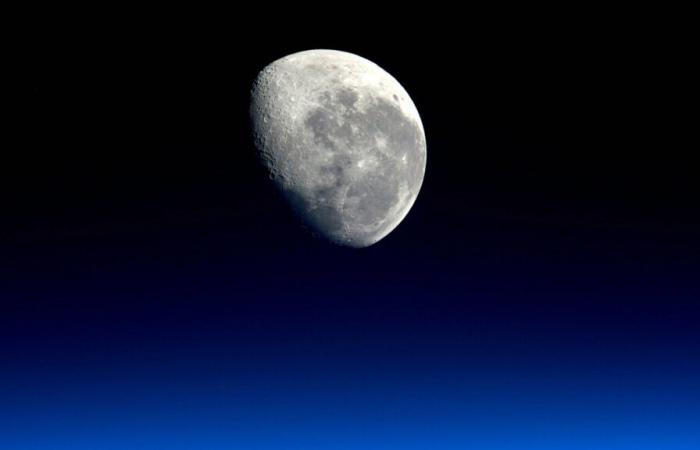SpaceX and Blue Origin, the two space giants of Musk and Bezos, will collaborate with NASA on the Artemis program. The space agency tasked the team with the mission of delivering a pressurized rover and a lunar habitat, crucial steps in establishing a lasting human presence on the Moon.
Elon Musk and Jeff Bezos for the Moon objective
NASA made a decision, and against all odds, it chose… both! In a strategic decision announced in mid-November, the American space agency confirmed that it would entrust crucial lunar missions to both SpaceX, Elon Musk’s company, and Blue Origin, that of Jeff Bezos. Far from fierce competition, it is a forced collaboration that is taking shape for the conquest of our natural satellite.
The stated objective is clear: establish a lasting human presence on the Moon by the end of the next decade. To achieve this, NASA needs robust and diverse solutions to transport heavy and bulky equipment to the lunar surface. It is in this context that the choice to rely on the two giants of what we call “New Space” falls.
This double contract is a continuation of the Artemis program, which aims to send astronauts back to the Moon for the first time since the end of the Apollo program. If SpaceX and Blue Origin had already been selected for the development of manned lander, NASA wanted to extend their scope to heavy logistics. The space agency had also anticipated this need from 2023 by asking the two companies to design cargo versions of their moon landing devices.
Having two lunar lander providers with different approaches to crew and cargo landing capabilities provides mission flexibility while ensuring a steady cadence of lunar landings for continued scientific discoveries and opportunities
This is what Stephen D. Creech said
associate deputy administrator for technical matters in NASA’s Moon-Mars Program Office. A diversification strategy that aims to minimize risks and maximize the chances of success.
A real collaboration between enemies?
Concretely, SpaceX will be responsible for transporting a pressurized rover developed by the Japanese space agency (JAXA) planned for 2032, in support of missions following Artemis 6. This rover, a real mobile station, will allow astronauts to explore the lunar surface over longer distances and in a protected environment.
For its part, Blue Origin will be responsible for delivering a lunar habitat in 2033. This module, the real first stone of a permanent lunar base, will constitute an essential element for the survival and work of future lunar residents.
Although collaboration is essential, a certain competition nevertheless persists. Each company will have to prove the reliability and effectiveness of its technology. The performance of these cargo missions will be decisive for future contract awards, particularly for subsequent manned missions.
This decision by NASA reflects a significant evolution in the approach to space exploration. The agency increasingly relies on the private sector, stimulating innovation and competition while sharing costs and risks. A public-private partnership which could well redefine the contours of the conquest of space. Because today governments can no longer do without private space companies.
Beyond the Moon, these cargo missions will also serve as a test bed for future missions to Mars. NASA considers the Artemis program as a crucial step in preparing for the exploration of the Red Planet. Technologies developed for the Moon, whether lander, pressurized rovers or habitats, will be adapted and improved for Martian challenges.
This double contract with SpaceX and Blue Origin therefore marks a turning point in the space race. A new era is dawning, where collaboration and competition intertwine to push the boundaries of human exploration. It remains to be seen whether this bold strategy will bear fruit and allow humanity to settle permanently on the Moon, then, one day, on Mars. The future will tell us.






